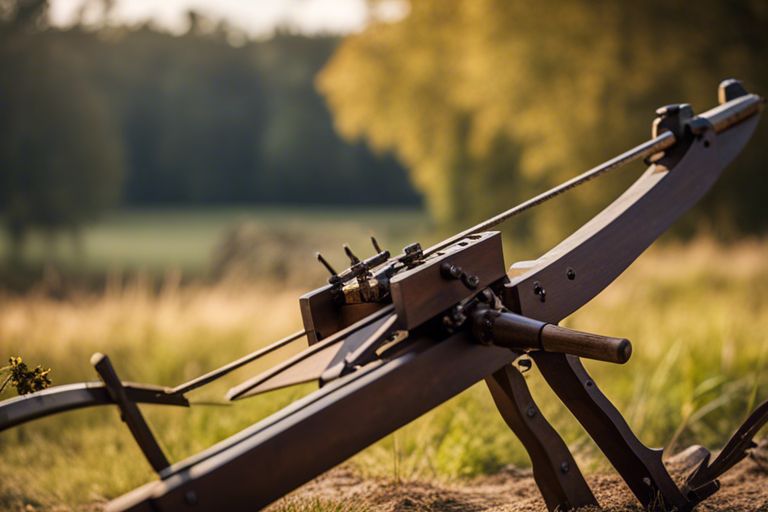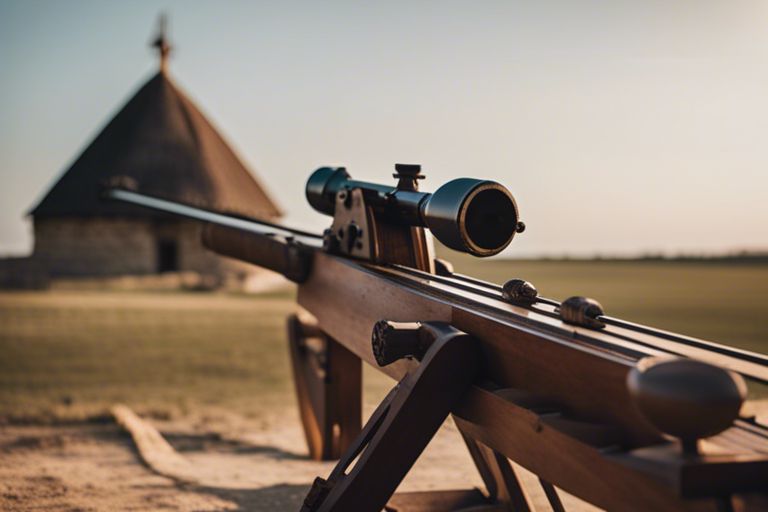Most scholars and history enthusiasts are captivated by the ancient weaponry that shaped battles of old. The ballista and the crossbow are two formidable weapons that have left a significant mark on history. While both are powerful in their own right, they each possess unique features that set them apart. The ballista, a large torsion-powered weapon, was capable of launching massive bolts with incredible force, capable of devastating entire formations. On the other hand, the crossbow, a handheld weapon, offered precision and quick reload times, making it a favorite among medieval troops. Delving into the intricacies of these ancient weapons will unveil the differences that made them distinct and effective on the battlefield.

Contents
- The Ballista: An Engineering Marvel
- Historical Context and Use
- Mechanical Design and Operation
- The Crossbow: A Portable Revolution
- Evolution from Ancient to Medieval Times
- Technical Aspects and User Proficiency
- Comparative Analysis
- Size and Mobility
- Range, Power, and Accuracy
- Impact and Legacy
- Influence on Warfare and Tactics
- Cultural and Historical Significance
- Final Words
The Ballista: An Engineering Marvel
Historical Context and Use
Context: The ballista, an ancient Roman artillery weapon, was renowned for its power and accuracy on the battlefield. Initially developed by the Greeks, the Romans perfected its design and utilized it in numerous military campaigns. The ballista was primarily used for long-range siege warfare, capable of launching large projectiles with immense force.
Mechanical Design and Operation
For the mechanical design and operation of the ballista, it consisted of a giant crossbow mounted on a wooden platform. The weapon’s power came from torsion springs made of sinew or animal tendon, which were twisted tightly to store energy. When released, these springs propelled the arms of the ballista forward, launching projectiles at high velocity towards enemy fortifications.
Ballista: The ballista was a formidable weapon on the ancient battlefield, known for its long-range accuracy and devastating impact. Capable of launching large bolts or stones with incredible force, the ballista was a staple in siege warfare, able to breach enemy defenses from a distance. Its mechanical efficiency and powerful design made it a feared presence in any conflict.
The Crossbow: A Portable Revolution
Evolution from Ancient to Medieval Times
With its origins dating back to ancient China, the crossbow evolved into a powerful weapon during medieval times. Unlike the traditional bow and arrow, the crossbow was easier to use and required less training, making it a preferred weapon for armies.
Technical Aspects and User Proficiency
An vital aspect of the crossbow is its mechanical design, which allows users to draw back the string and lock it into place, ready to release a deadly bolt. This made it more accurate and powerful than other projectile weapons of its time.
Crossbow users needed less physical strength compared to traditional archers, as the lever or cranequin assisted in drawing back the string. However, precision and skill were still vital in hitting targets effectively, especially at longer distances.

Comparative Analysis
| Parameter | Ballista |
| Size and Mobility | Large, stationary weapon that requires a team to operate and transport. |
| Range, Power, and Accuracy | Offers exceptional range and power, delivering deadly force with high precision. |
Size and Mobility
Analysis: The ballista is known for its significant size and lack of mobility. It was typically mounted on a wheeled carriage but required a team for transportation and operation due to its heavy and bulky nature.
Range, Power, and Accuracy
Analysis: Any comparison between a ballista and a crossbow will show that the ballista excels in range, power, and accuracy. It could launch large bolts over impressive distances with incredible force, making it a formidable weapon on the battlefield.
It was capable of striking targets with precision, often penetrating armor or fortifications with ease, making it a highly effective war machine in ancient times.
Impact and Legacy
Many What is a Ballista? scholars and historians agree that the Ballista has left a significant mark on ancient warfare and military tactics. This ancient weapon, with its exceptional range and formidable power, revolutionized the way battles were fought and fortifications were besieged.
Influence on Warfare and Tactics
Any discussion on ancient weaponry would be incomplete without acknowledging the immense impact the Ballista had on shaping warfare and military strategies. The precision and strength of the Ballista bolts allowed armies to strike from a distance, disrupting enemy formations and breaching defensive structures with unprecedented efficiency.
Cultural and Historical Significance
An integral part of ancient warfare, the Ballista holds a paramount place in history, with its presence felt in pivotal battles and conquests. The sound of the Ballista releasing its deadly projectiles struck fear into the hearts of enemies and symbolized power and dominance on the battlefield.
Another aspect of the Ballista’s cultural and historical significance lies in its portrayal in art and literature of the time. From detailed engravings on ancient artifacts to epic poems recounting heroic feats, the Ballista has captured the imagination of generations and immortalized its impactful role in ancient warfare.
Final Words
Drawing together the ancient roots of the ballista and crossbow, it is evident that while these two weapons may seem similar in design and purpose, they each possess unique characteristics that set them apart. The ballista’s massive size and ability to launch large projectiles with tremendous force distinguish it as a formidable siege weapon, known for its role in ancient battles. On the other hand, the crossbow’s compact size, ease of use, and accuracy make it a versatile weapon suitable for a range of situations, from hunting to warfare. By understanding the distinct features and history of these ancient weapons, we can gain a deeper appreciation for the ingenuity and craftsmanship of our ancestors in developing such innovative technology.

Leave a Reply